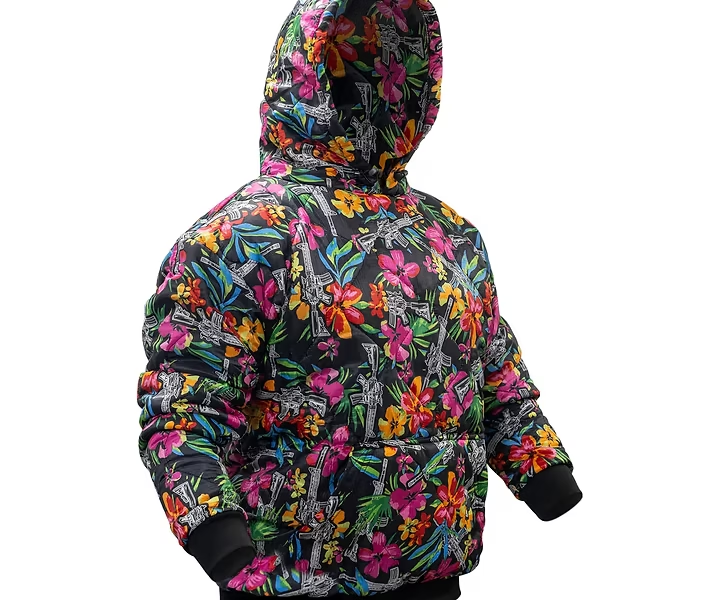From Pixels to Predictions: How Cloud-Native Deep Learning and AI are Transforming Visual Data Analytics at Scale: Insights from Ahmad Saeed
Ahmad Saeed, Principal Software Engineer @ One of the leading investment banks in USA
Education:
M.S. in Data Science – East Carolina University, NC, USA
B.Tech. in Computer Science & Engineering – Kamla Nehru Institute of Technology, UP, India
LinkedIn: https://www.linkedin.com/in/ahmadsaeeds/
Ahmad Saeed is a highly accomplished Principal Software Engineer with over 20 years of experience in designing and implementing technological solutions that cater to his organization’s business needs. Throughout his career, he has demonstrated expertise in assessing existing technology infrastructure and identifying areas for improvement.
What motivated your research into scaling visual deep learning models using cloud infrastructure?
The motivation stemmed from a core challenge: how to make visual data—such as images and video—actionable at enterprise scale. Traditional systems could not handle the volume or speed at which image data is generated, especially when models like image captioning or object detection need real-time inference. I saw an opportunity to combine my expertise in deep learning and cloud-native computing to architect systems where visual intelligence becomes scalable, efficient, and practically deployable for real-world use cases.
What does “cloud-native visual analytics” really mean in practice?
It means designing and deploying deep learning models—especially for visual tasks—within cloud ecosystems as first-class citizens, not as isolated tools. Instead of training models offline and uploading results, we embed them directly into cloud workflows: streaming pipelines, auto-scaling containers, and edge-to-cloud networks. These models can dynamically process millions of images per day—generating captions, tagging objects, detecting anomalies—all within distributed, fault-tolerant architectures.
Can you explain how your image captioning model fits into this cloud-native vision?
In my research, I developed a deep learning framework for automatic image captioning using convolutional and recurrent neural networks. I then focused on containerizing and deploying these models in cloud environments with high availability and low latency. The innovation lies not just in model accuracy but in operationalizing visual intelligence: ensuring it can serve thousands of concurrent requests, retrain continuously with fresh data, and integrate with analytics dashboards. This bridges the gap between research models and production-grade systems.
What technical challenges did you face when adapting deep learning models to large-scale cloud platforms?
Several challenges emerged:
- Latency: Deep models are computationally expensive. I used model quantization and GPU-based serving to reduce response time.
- Scalability: Auto-scaling inference services while maintaining throughput and fault tolerance required custom orchestration.
- Data flow: Integrating models into streaming platforms like Kafka or Spark required redesigning data ingestion for image formats.
- Cost: Continuous GPU usage is expensive, so we introduced dynamic resource allocation based on traffic predictions using ML.
What are some real-world applications that benefit from this type of scalable visual intelligence?
There are numerous domains:
- Retail: Automated tagging and description of product photos at scale.
- Healthcare: Assisting diagnosis by generating interpretable reports from X-rays or MRIs.
- Public Safety: Real-time surveillance systems with scene understanding.
- Agriculture: Image-based monitoring of crop health from drone feeds.
In each case, the key is turning unstructured image data into structured, analyzable formats—in real time. - Finance: Visual document processing for invoices, ID verification, and fraud detection using scanned or captured documents
How does your work ensure that these models stay up-to-date and adaptive in changing environments?
We built an automated feedback loop that continuously ingests user corrections and performance metrics. These are used to retrain the model periodically using a cloud-native ML pipeline, ensuring relevance. We also monitor model drift using statistical checks, triggering alerts or retraining when visual distributions change significantly—such as a seasonal shift in image content or a domain expansion.
Some critics argue that visual deep learning systems lack transparency. How do you address explainability in your framework?
That’s a valid concern. I integrated explainability layers that use attention visualization—highlighting the regions of the image that influenced the generated caption or prediction. We also log these overlays and provide them alongside captions in our analytics dashboard. This not only builds trust but also aids domain experts in validating AI-generated insights. Interpretability shouldn’t be an afterthought—it’s essential for adoption, especially in sensitive fields like healthcare or security.
What makes your approach to visual data analytics distinct from existing commercial solutions?
Many commercial systems offer visual AI in isolated silos—fixed APIs with no control over the model or infrastructure. My approach is open, adaptive, and embedded directly into the user’s data environment. I also focus on customization at scale, enabling domain-specific tuning (e.g., captions for medical vs. e-commerce images) and seamless integration with real-time data pipelines. It’s not a black-box service—it’s a full-stack, intelligent system that learns and evolves with the user’s ecosystem.
How do you envision the future of visual AI in the cloud, especially with emerging technologies like edge computing?
We’re moving toward decentralized intelligence, where lightweight models run at the edge-on drones, mobile devices, or IoT sensors—and sync with the cloud for aggregation and deeper analysis. This architecture balances speed, privacy, and resource use. My ongoing work explores federated learning for vision, where edge devices learn locally but contribute to a global model. This future allows real-time, personalized visual intelligence while respecting data boundaries and latency constraints.
What message would you share with tech leaders looking to adopt cloud-native visual analytics in their organizations?
Start by identifying the untapped image or video data already flowing through your systems-chances are sitting idle. Visual analytics can unlock powerful insights, but the key is alignment between data science, DevOps, and business teams. Build incrementally: deploy explainable models in controlled workflows, validate outcomes, then scale. My research and solutions demonstrate that visual AI is not just technically feasible-it’s strategically transformative when done right.
In summary, my experience deploying cloud-native AI solutions for visual data analytics has taught me that success hinges on bridging scalable infrastructure with intelligent, explainable models. By working with experts across domains, we can design robust, adaptable systems that unlock actionable insights from image data while ensuring performance, traceability, and compliance. This approach positions organizations to not only manage today’s visual data explosion but to lead the future of AI-powered decision-making.
To learn more about Ahmad’s research and expertise in this field, please refer to
http://article.sapub.org/10.5923.j.se.20241102.01.html





